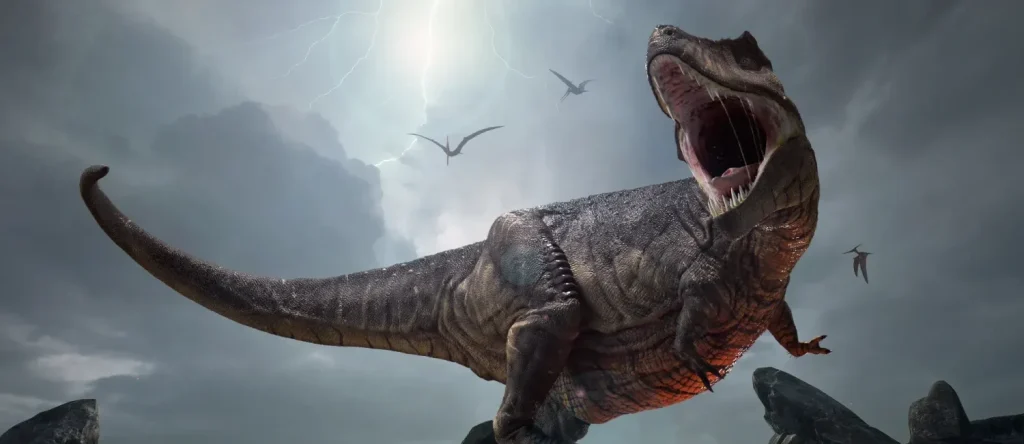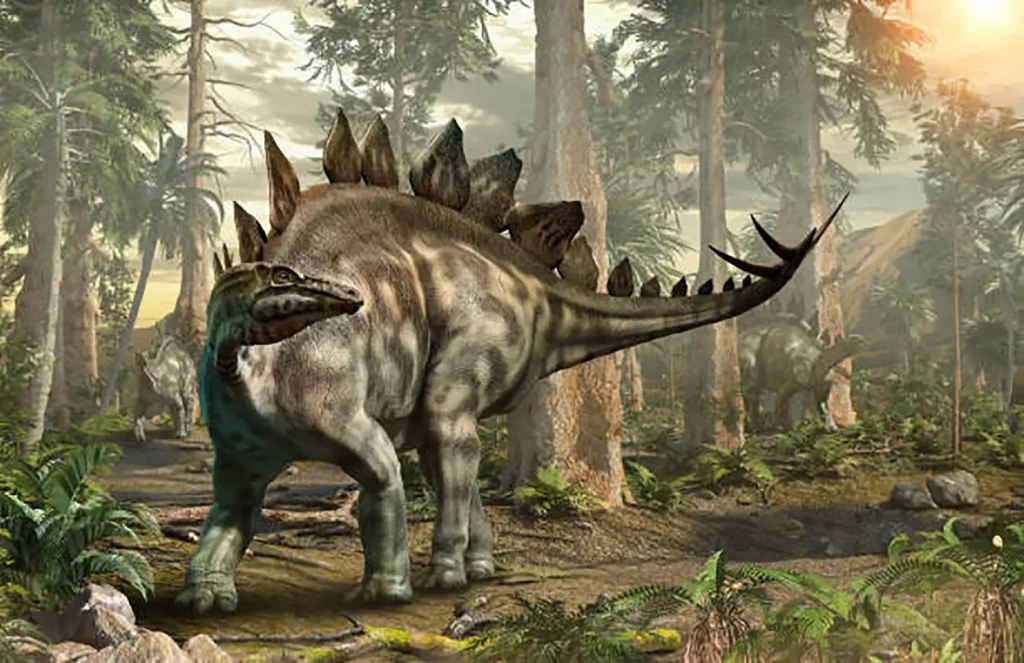The Truth Behind Dinosaur Extinction: The Full Story of the K-Pg Boundary Event Caused by the Chicxulub Impactor.
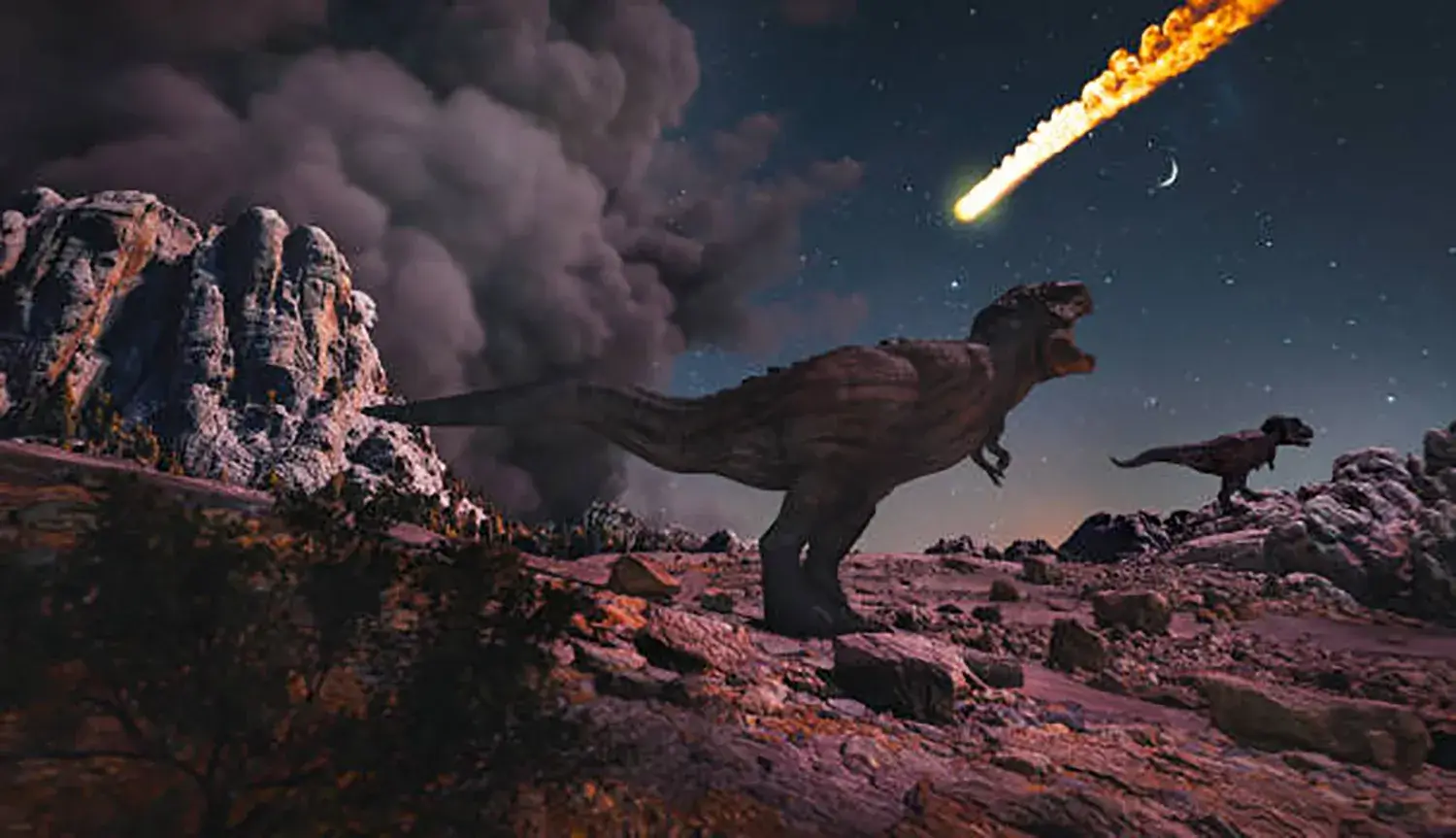
The extinction of the dinosaurs is considered one of the most dramatic events in Earth’s history and has long been a scientific mystery.
However, the Asteroid Impact Theory, which posits that a giant asteroid collision occurred about 66 million years ago, is overwhelmingly the most plausible explanation today.
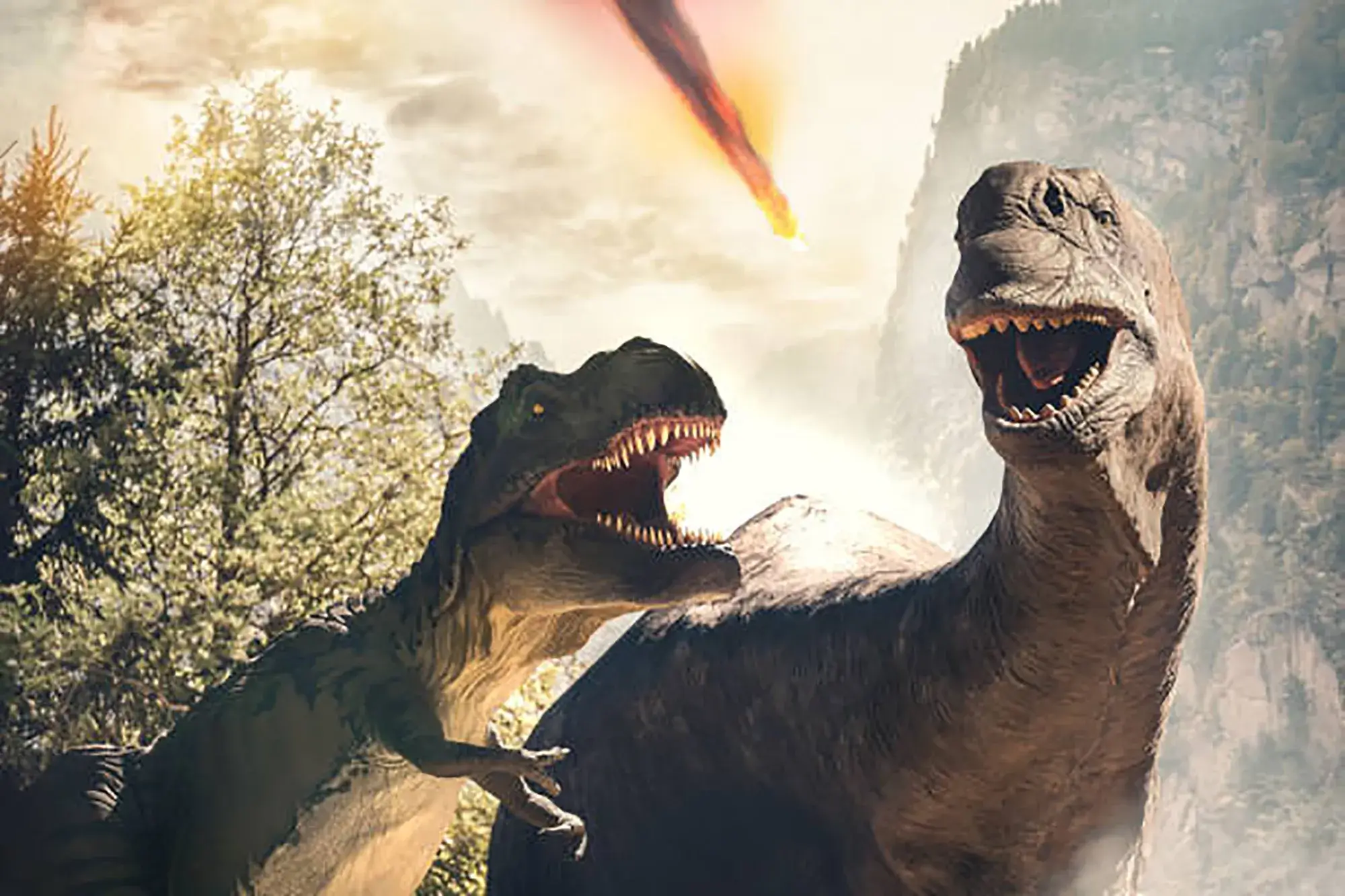
The Asteroid Impact Theory is Overwhelmingly the Most Plausible Cause of the Dinosaur Extinction.
This great catastrophe is known as the K-Pg Boundary Event, as it marks the boundary between the Mesozoic Cretaceous (K) period and the Cenozoic Paleogene (Pg) period.
It was one of the largest disasters in history, involving a chain reaction of compound catastrophes and long-term environmental upheaval.
Chapter 1: The Decisive Evidence and Crater Supporting the Asteroid Impact
The strongest foundation for the Asteroid Impact Theory lies in the discovery of “geological fingerprints” in rock layers worldwide and the existence of a massive impact scar (crater).
The Decisive Evidence: The Iridium Spike
Rock layers deposited at the K-Pg boundary show elevated concentrations of the noble metal iridium and other platinum-group elements—over 1,000 times higher than normal levels in the Earth’s crust.
Since these elements are rare in the crust but abundant in asteroids and meteorites, this is considered decisive proof that material from space rained down onto the Earth.
The presence of shocked quartz grains and microscopic diamonds, generated by the immense pressure of the impact, further proves the energy of the colossal shockwave.
The Massive Impact Scar: The Chicxulub Crater
The impact site of the destructive asteroid has been identified as the Chicxulub Crater, located offshore on Mexico’s Yucatán Peninsula.
A giant asteroid, spanning approximately 10 to 12 km, struck the Earth, unleashing energy estimated to be one billion times that of the Hiroshima atomic bomb, creating a massive crater spanning 170 to 200 km in diameter.
Chapter 2: The Moment of Impact: A Chain of Short-Term Catastrophes
The moment the 10-km-wide giant asteroid struck the Earth, the global environment was subjected to short-term catastrophes of unimaginable scale.
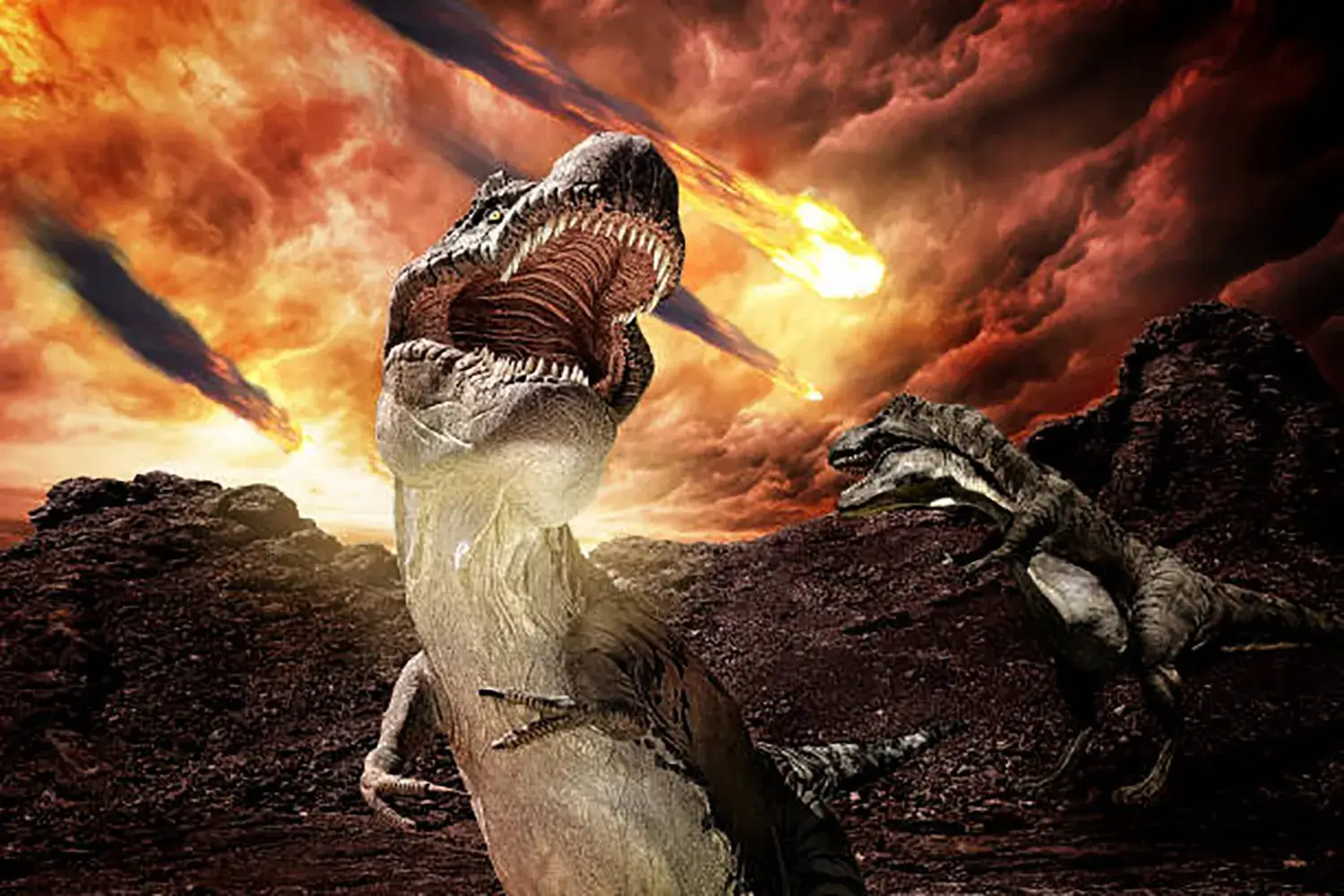
The Chain of Short-Term Catastrophes Triggered by the Giant Asteroid Impact
Instantaneous Destruction and a Blazing Wave
At the moment of impact, an immense thermal radiation flash occurred, instantly incinerating creatures within the surrounding region (a radius of 1,000 km).
The colossal heatwave, generated by the vaporization of the Earth’s surface crust, is believed to have reached as far as modern-day Canada.
Mega-Earthquakes and Giant Tsunamis
Immediately after the collision, a mega-earthquake of at least magnitude 10.1 shook the entire planet.
Furthermore, the backwash of seawater rushing into the crater created a giant tsunami that, depending on the coastline, reached up to 305 meters, devastating coastal regions worldwide.
A Scene of “The End of the World”
Approximately 45 minutes after impact, a blast wave traveling at 965 km/h swept across the land, and incandescent microtektites (glass-like spheres) rained down like meteors.
The sky grew dark, and the ground was covered in scorching ash and debris—a scene truly reminiscent of “the end of the world.”
Chapter 3: Long-Term Environmental Upheaval and “Nuclear Winter”
The ultimate cause for the elimination of most life on Earth (over 60% of all species) was the long-term impact on the environment following the collision.
Nuclear Winter and the Collapse of the Food Chain
The massive amounts of dust and soot ejected into the atmosphere covered the entire Earth, blocking out sunlight.
This phenomenon created a condition very similar to the “nuclear winter” predicted after nuclear war, drastically reducing plant photosynthesis and collapsing the foundation of the food chain.
Large dinosaurs, which required huge amounts of food, could not adapt to this environmental upheaval and rapidly went extinct.
Conversely, small mammals, like mice, that required less food were able to survive the extreme conditions.
Acid Rain and Ozone Layer Destruction
As the soot and ash were washed out of the atmosphere, acid-laden rain and mud poured onto the Earth, causing further damage to ecosystems.
Additionally, toxins generated by the massive fires temporarily destroyed the protective ozone layer, accelerating the extinction process.
Chapter 4: Compounding Factors and Latest Research Findings
While the giant asteroid impact is the primary cause, it is reasonable to assume that a combination of factors delivered the final blow to extinction.
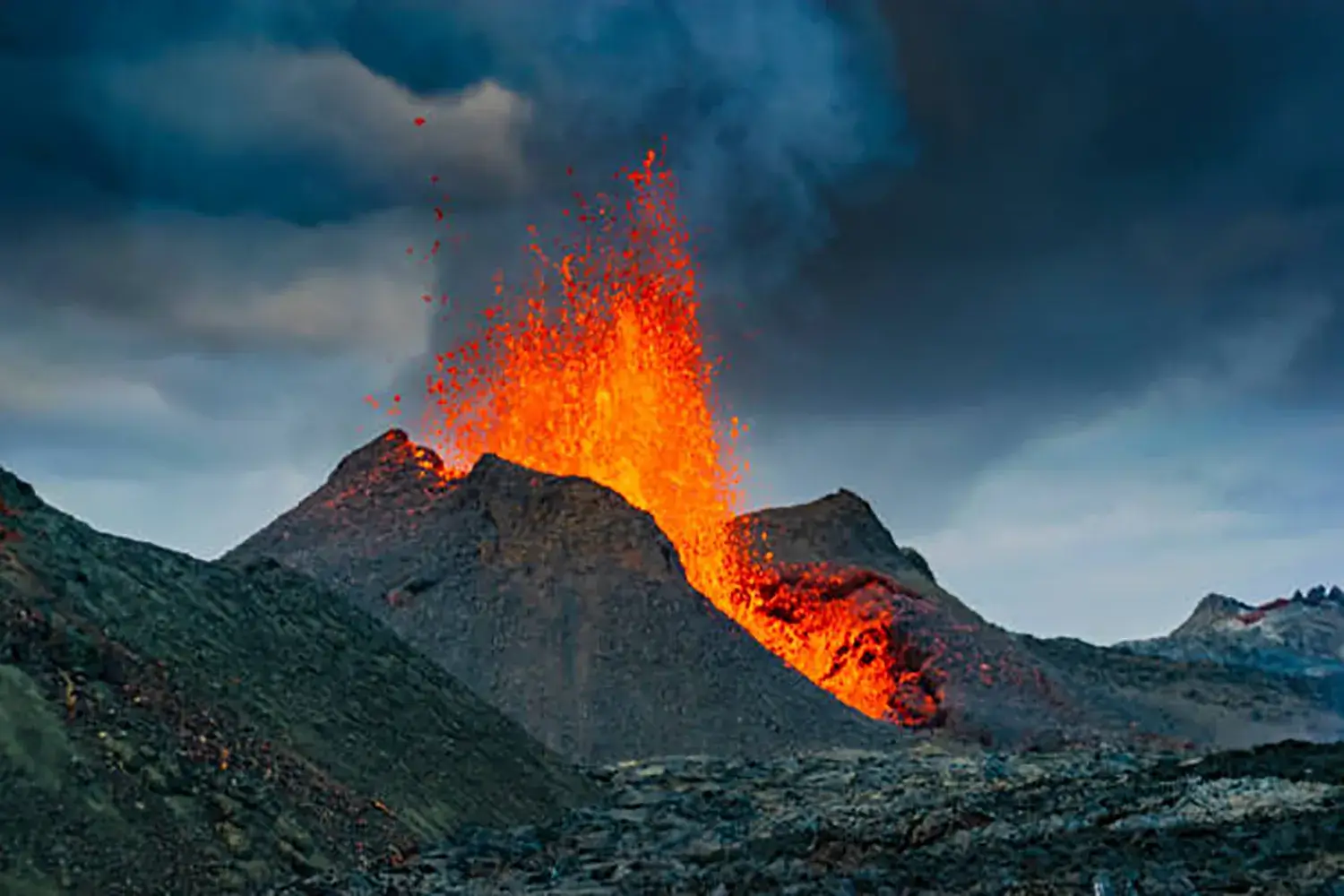
The Compound Factor Theory That Delivered the Final Blow to Extinction
The Influence of Volcanic Activity (Deccan Traps)
It is known that massive volcanic eruptions (the Deccan Traps) occurred in what is now the Deccan Plateau in India around the time of the extinction.
While the theory that this activity contributed to the extinction is strong, it is also argued that the greenhouse gases released by the volcanoes may have actually mitigated the effects of the “nuclear winter.”
However, the elemental patterns in the rock layers align most closely with the giant asteroid impact, rather than volcanic origins.
Asteroid Origin Identified (2024)
The latest research in 2024 identified the Chicxulub asteroid as a carbonaceous chondrite meteorite formed in the “outer solar system” beyond Jupiter.
This confirmed that Earth’s history was profoundly rewritten by an “unlucky visitor” from the distant reaches of the solar system, which was unlike the typical asteroids that collide with Earth.
Chapter 5: Extinct Species and the Survivors

Extinct Species and the Life That Survived
The appearance of the giant asteroid brought the 150-million-year history of the dinosaurs to an end.
Extinct Species
In addition to non-avian dinosaurs, large organisms and those at the top of the food chain, which were vulnerable to environmental change—such as ammonites and gigantic marine reptiles (Mosasaurus)—suffered catastrophic damage.
Surviving Species
The birds (Avian Dinosaurs), a branch of the dinosaur lineage, survived and continue to thrive today.
In current taxonomy, “birds are dinosaurs themselves,” so it is more accurate to say that “non-avian dinosaurs went extinct” when discussing the event.
Additionally, small mammals, like mice, survived the extreme environment with limited food, paving the way for the Cenozoic Era, the Age of Mammals.
